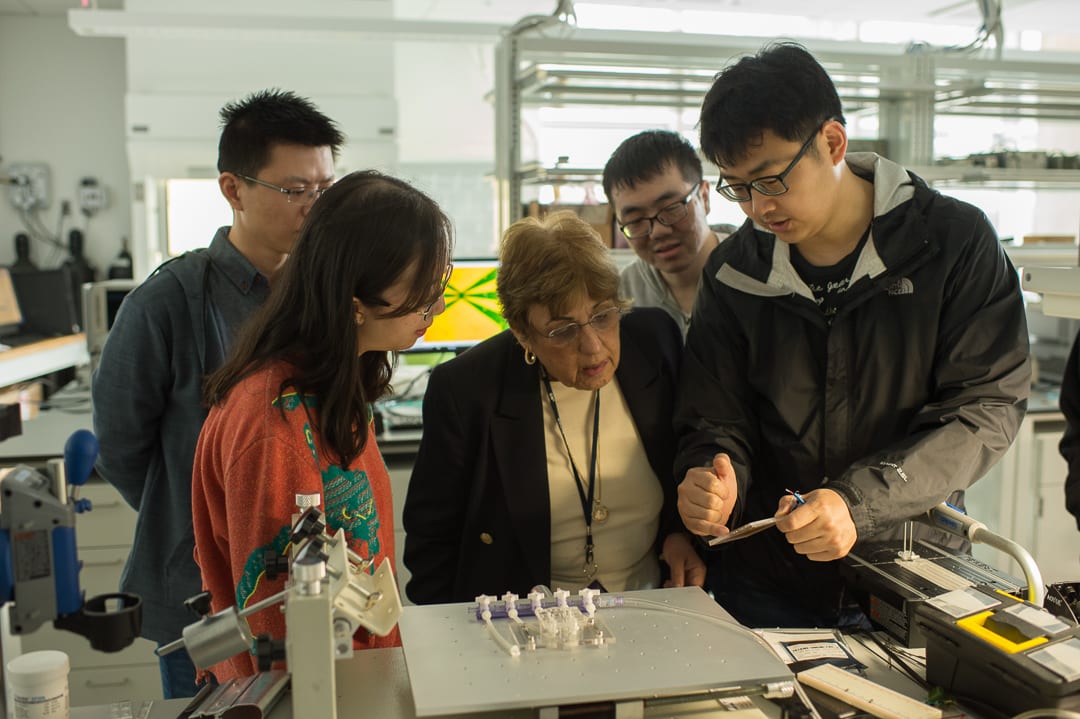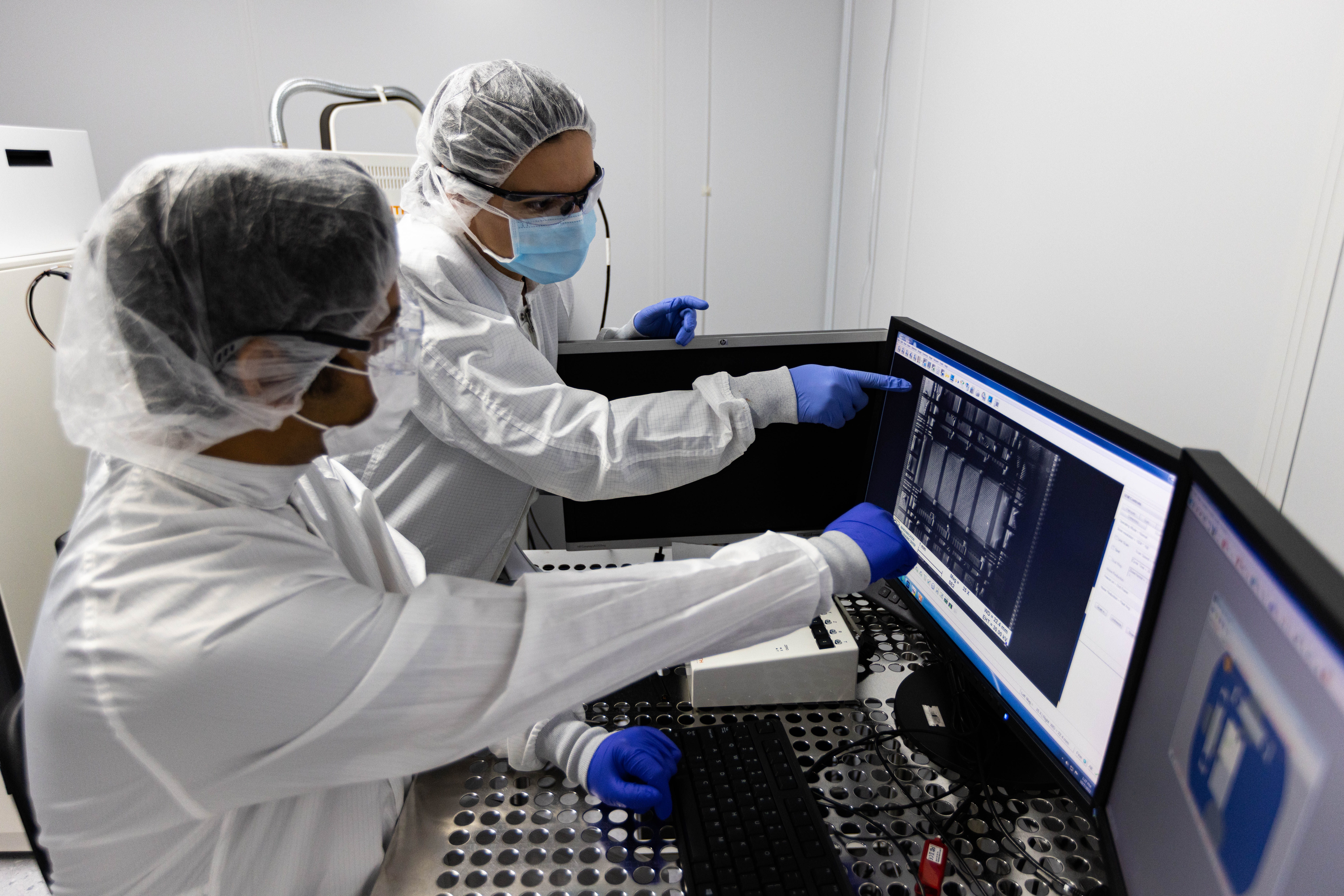Assistant Professor Gina Adam works on several interdisciplinary projects aiming to develop robust prototyping capabilities for new synaptic devices, called memristors. She is leading a collaboration with neuroscientists from George Mason University to draw inspiration from the brain structure in the design of next-generation neuromorphic chips. The project supported by the Department of Energy investigates how the brain performs robust computation despite its unreliable synapses and develops new algorithms and architectures resilient to existing memristor imperfections. Prof. Adam also works on engineering superior memristors using the GW Nanofabrication and Imaging Center. Moreover, Prof. Adam is contributing as a research partner to develop a nanotechnology accelerator platform in collaboration with the National Institute of Standards and Technology (NIST) and Google, together with groups at University of Michigan, University of Maryland, Brown University and Carnegie Mellon University. This community building effort is envisioned as an opportunity for university researchers working on novel electronic devices to pursue their heterogeneous integration on silicon-proven circuitry in line with the CHIPS act.
Professor Mona Zaghloul is also a heavy user of our GW Nanofabrication and Imaging Center, working on next generation sensing chips and biosensors to detect COVID-19 virus in partnership with professor Jeanne Jordan from GW Public Health School. Prof. Zaghloul is also studying two-dimensional materials and their piezoelectric properties for sensor applications.
In the next door lab, novel photonic chips for neuro-inspired computing are being developed by Professor Volker Sorger, as part of the newly AFRL/ AFOSR funded Center-of Excellence ExPlor and the SRC/DARPA JUMP Center for Heterogeneous Integration of Micro Electronic Systems (CHIMES). His group has developed a new approach to perform computations required by a neural network, using light instead of electricity. Such a photonic tensor core performs multiplications of matrices in parallel, improving the speed and efficiency of current deep learning paradigms. Prof. Sorger is developing this photonic system by strategically utilizing photonic parallelism via wavelength division multiplexing and novel photonic multi-state memory devices based on phase-change materials. It promises high throughputs enabled by ultra-short delays from the advanced optoelectronics and compact photonic integrated circuitry to support the looming 5G networks and beyond.



